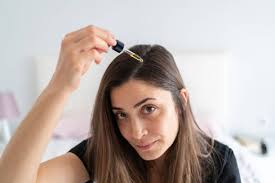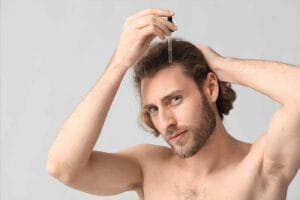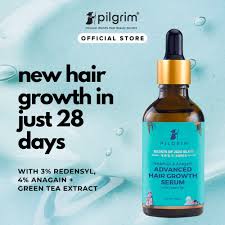Hair serums are often praised as miracle workers for frizz, shine, and overall hair manageability—but what happens when they backfire?
While they can offer a sleek finish and long-lasting smoothness, it’s important to recognize that not every serum suits every scalp or hair type. Misuse or the wrong formula can lead to unexpected issues. Yes, we’re talking about the side effects of hair serum—from irritation to buildup that can sabotage your hair goals.
That’s why this blog dives deep into the most common side effects of hair serum, who’s most at risk, and how to avoid problems before they start. Because the more informed you are, the better choices you can make for your hair’s long-term health..
Common Side Effects of Hair Serums
So what can go wrong with hair serums? Surprisingly, quite a bit—especially if the product doesn’t match your hair or is misused.
1. Scalp Irritation or Allergic Reactions
Let’s start with the most obvious and alarming: scalp irritation. Some serums contain artificial fragrances, alcohols, or preservatives that can be harsh on sensitive skin. If you’ve ever felt an itch creeping up right after applying your serum—or worse, noticed red patches—it might be an allergic reaction. Sometimes, it’s not about the entire formula, but just one pesky ingredient that your skin doesn’t like.
2. Greasiness or Product Buildup
Ever styled your hair only to find it looking flat and greasy within hours? Yep, that might be your serum overdoing its job. Using too much product or applying it too close to the roots often leads to greasy buildup. Over time, this can clog pores on your scalp and even mess with healthy hair growth.
3. Hair Fall Due to Silicone or Alcohol Overload
Silicones are a double-edged sword. They give your hair that temporary smoothness and shine—but too much can coat your strands like plastic, suffocating them. Combine that with alcohol-based serums and you’ve got a recipe for dryness, breakage, and yes—hair fall. If you’re noticing more strands in your brush lately, your serum might be to blame.
4. Dry Ends from Overuse
It’s ironic, but using serum too often can actually dry out your hair—especially the ends. Many serums contain alcohol to help with fast absorption, but over time, this can rob your hair of moisture. Your once-lustrous ends can become dry, frizzy, and prone to splitting.
5. Dull, Lifeless Hair Without Proper Clarification
Serums often include silicones that build up on your hair shaft. When you don’t clarify (deep clean) your scalp regularly, these ingredients sit on your hair, collecting dust, sweat, and pollutants. What you’re left with is dull, lifeless hair that no serum in the world can save—until you clarify and reset.
Who Is Most at Risk?
Let’s be honest—not all hair types respond the same way to serum. Some of us are more prone to side effects than others.
Sensitive Scalps
If your scalp reacts easily to shampoos, masks, or even water temperature, you need to be extra careful with serums. Fragrances, dyes, and strong preservatives can trigger itchiness or inflammation.
Fine or Thin Hair
Using thick, oil-rich serums on fine hair is a common mistake. These heavy formulas can weigh your strands down, making them look limp, oily, and even contributing to breakage due to buildup at the roots.
People Who Skip Scalp Exfoliation
Serum isn’t just “set it and forget it.” If you’re not clarifying your scalp or exfoliating weekly, product buildup is inevitable. And that can lead to a range of problems from clogged follicles to poor hair growth.
Heavy-Handed Users
A little serum goes a long way—but not everyone got the memo. Over-applying serum or rubbing it into your scalp (unless it’s made for that) can result in greasy hair, buildup, and irritation. Use less than you think you need, then build up if necessary.
How to Choose the Right Hair Serum for Your Hair
Now that we’ve covered the warnings, let’s get positive. You can enjoy hair serum safely—if you pick the right one based on your hair type.
For Dry or Frizzy Hair
Look for nourishing, oil-rich serums with ingredients like:
- Argan Oil
- Jojoba Oil
- Shea Butter
These deeply moisturize without leaving behind a greasy film.
For Fine or Oily Hair
Go lightweight! The best picks for you include:
- Water-based serums
- Silicone-free formulas
- Minimal oil blends
You want just enough smoothing without the weight.
For Damaged or Chemically Treated Hair
Repair is the name of the game here. Look for:
- Keratin
- Biotin
- Peptides
These help rebuild the hair structure and add resilience.
For Curly or Textured Hair
Curls thrive with moisture. Ideal ingredients include:
- Coconut oil
- Castor oil
- Marula oil
Look for serums that define and hydrate, not flatten your curls.
For Sensitive Scalps
If you react easily to hair products, look for:
- Fragrance-free
- Alcohol-free
- Minimal ingredient formulas
And always, always patch test before diving in.
How to Avoid These Side Effects
Prevention is way easier than damage control. Here’s how to keep your serum use safe and effective.
1. Don’t Apply to the Scalp
Unless your serum is specifically labeled for scalp use, keep it off. Most styling serums are meant for mid-length to ends only.
2. Use Only a Little
For short hair, one pump is plenty. For longer hair, maybe two. That’s it. You can always add more if needed, but overdoing it can mess up your style and your hair health.
3. Wash Hair Regularly
Serum is not a substitute for washing your hair. If you use styling serums frequently, make sure to clarify once a week to avoid buildup.
4. Avoid Mixing Too Many Products
Using a leave-in cream, serum, heat protectant, and oil together? That’s a lot of layering. Try to simplify your routine to avoid product overload.
5. Use a Clarifying Shampoo Weekly
This helps remove silicone and other buildup from your strands. Make sure to follow up with a deep conditioner to replenish moisture.
When to Stop Using a Hair Serum
Sometimes, your hair is just not vibing with your current product. And that’s okay!
Signs You Should Pause or Switch
- Increased itching or irritation
- More hair fall than usual
- Greasy roots even after washing
- Lifeless, limp hair despite styling
Try switching to a lighter, more natural serum. If symptoms persist, consult a dermatologist or trichologist to rule out allergic reactions or scalp conditions.
Final Thoughts
Hair serums can truly transform your hair care routine—when used wisely. They’re lightweight, convenient, and often packed with nourishing ingredients. But just like any beauty product, being aware of the side effects of hair serum is essential to protect your scalp and strands in the long run.
Remember, your goal isn’t just shiny hair for a day—it’s healthy, strong, and manageable hair every day. The more you understand your hair type and the ingredients that work (or don’t work) for you, the better your results will be. Don’t let the side effects of hair serum catch you off guard. Read labels, patch test new products, and give your hair what it truly needs—not just what’s trending.
Want to know how to properly apply hair serum to avoid these issues? Check out our How to Use Hair Serum Properly blog for a step-by-step guide!



